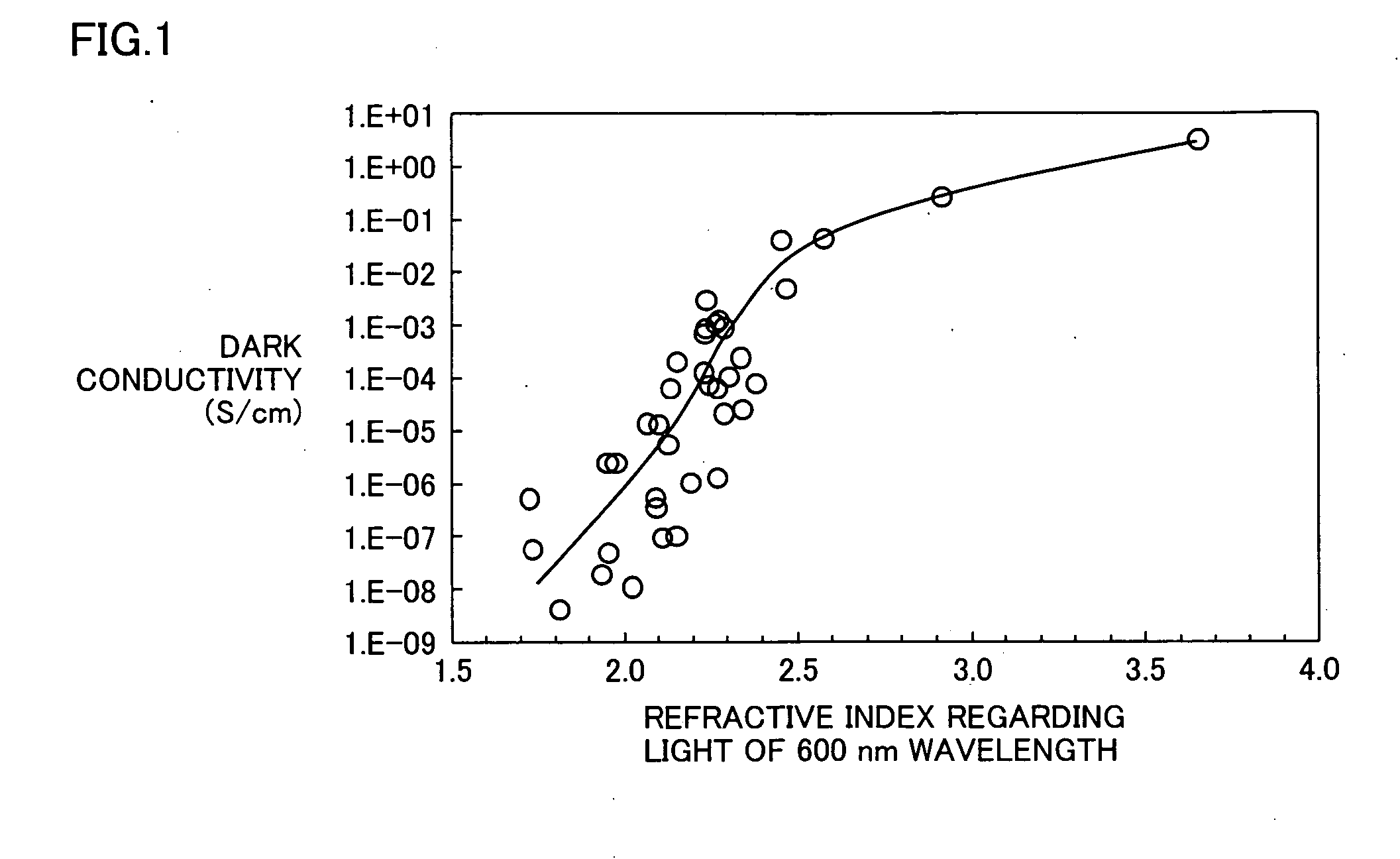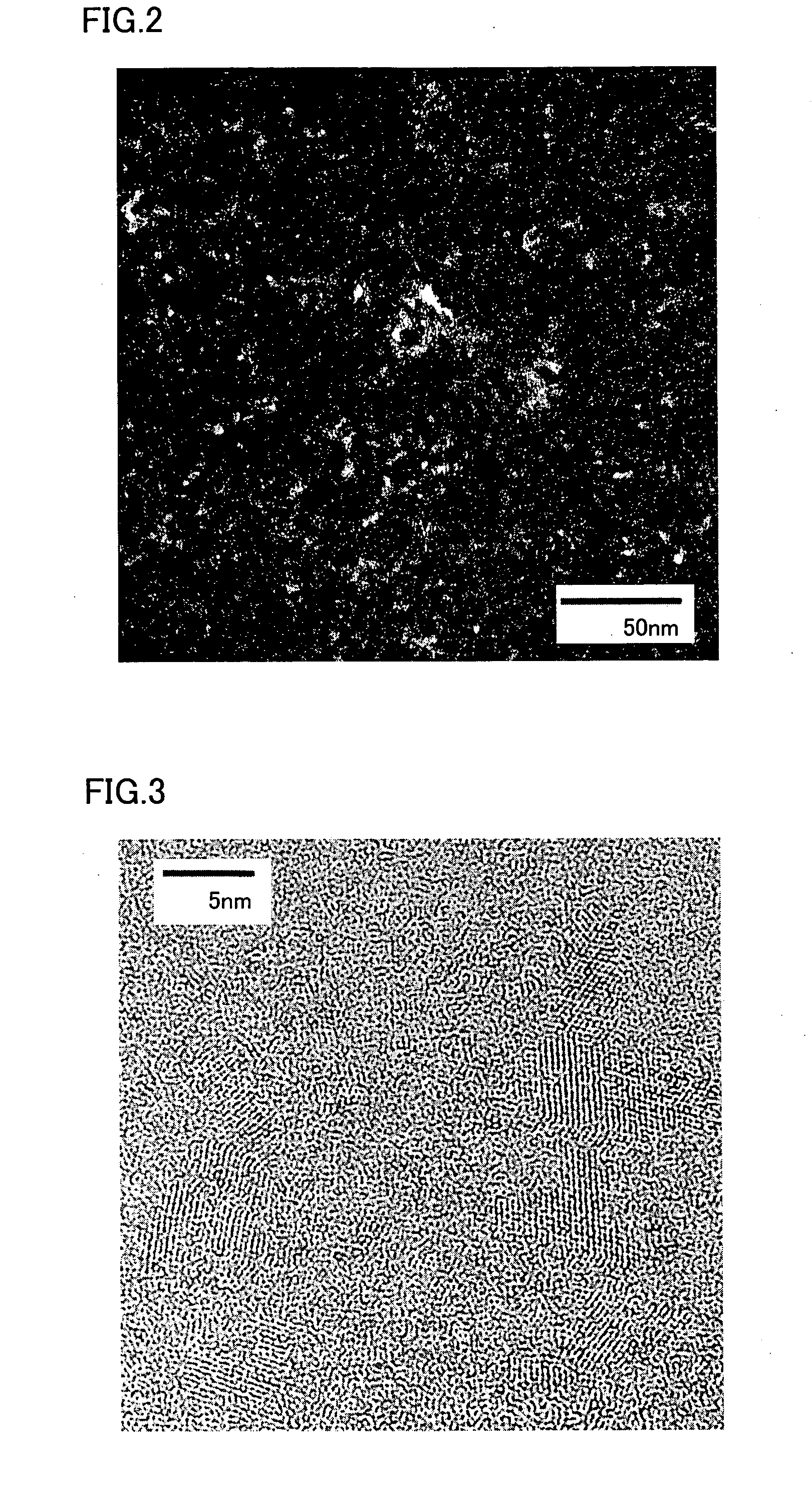Stacked photoelectric converter
a technology of photoelectric converter and stacked photoelectric converter, which is applied in the direction of photovoltaics, electrical devices, semiconductor devices, etc., can solve the problems of increasing the production cost and time, increasing the apparatus cost, and reducing the properties of the photoelectric conversion module, so as to reduce production costs and time, increase the current generated by the front photoelectric conversion unit, and high dark conductivity
- Summary
- Abstract
- Description
- Claims
- Application Information
AI Technical Summary
Benefits of technology
Problems solved by technology
Method used
Image
Examples
example 2
[0137] A stacked-layer type photoelectric conversion device as shown in FIG. 17 was fabricated as Example 2. The device of Example 2 differs from the device of Example 1 of FIG. 10 only in that a 30 nm thick n-type silicon composite layer 4 is employed as the n-type layer of front photoelectric conversion unit 3 to serve both as the intermediate reflective layer and the n-type layer.
[0138] As seen from Table 1, in Example 2 compared to Example 1, Jsc is further increased and Eff is further improved, and the spectral sensitivity currents of both the front and back photoelectric conversion units are increased, presumably for the following reason. Since silicon composite layer 4 also serves as the n-type layer of front photoelectric conversion unit 3, light reflected to the front photoelectric conversion unit 3 side and light transmitted to the back photoelectric conversion unit 5 side are both unnecessary to transmit the 30 nm thick n-type microcrystalline silicon layer, resulting in...
example 3
[0141] A stacked-layer type photoelectric conversion device as shown in FIG. 18 was fabricated as Example 3. The device of Example 3 differs from the device of Example 2 of FIG. 17 only in that the n-type layer of front photoelectric conversion unit 3 is formed by stacking a 30 nm thick n-type silicon composite layer 34 as a first n-type layer and a 5 nm thick n-type microcrystalline silicon layer 35 as a second n-type layer. Needless to say, the n-type silicon composite layer 34 of Example 3 is formed under plasma CVD conditions similar to those for n-type silicon composite layer 4 in Examples 1 and 2.
[0142] As seen from Table 1, although Jsc in Example 3 is slightly decreased compared to Example 2, FF and Eff are improved. Further, although the spectral sensitivity current of the front photoelectric conversion unit in Example 3 is slightly lower than that of Example 2, it is higher than those of Comparative Example 1 and Example 1. This is presumably because insertion of n-type m...
example 4
[0143] A stacked-layer type photoelectric conversion device as shown in FIG. 19 was fabricated as Example 4. The device of Example 4 differs from the device of Example 2 of FIG. 17 only in that the n-type layer of front photoelectric conversion unit 3 is formed by stacking a 10 nm thick n-type microcrystalline silicon layer 36 as a first n-type layer, a 60 nm thick n-type silicon composite layer 37 as a second n-type layer and a 5 nm thick n-type microcrystalline silicon layer 38 as a third n-type layer.
[0144] As seen from Table 1, although Jsc in Example 4 is slightly decreased compared to Example 3, FF and Eff are improved. This is presumably because n-type microcrystalline silicon layer 36 inserted between i-type amorphous silicon layer 32 and n-type silicon composite layer 37 has decreased the contact resistance at the i / n interface, and thus FF is further improved compared to Example 3. In Example 4, n-type microcrystalline silicon layer 36 and n-type microcrystalline silicon ...
PUM
 Login to View More
Login to View More Abstract
Description
Claims
Application Information
 Login to View More
Login to View More - R&D
- Intellectual Property
- Life Sciences
- Materials
- Tech Scout
- Unparalleled Data Quality
- Higher Quality Content
- 60% Fewer Hallucinations
Browse by: Latest US Patents, China's latest patents, Technical Efficacy Thesaurus, Application Domain, Technology Topic, Popular Technical Reports.
© 2025 PatSnap. All rights reserved.Legal|Privacy policy|Modern Slavery Act Transparency Statement|Sitemap|About US| Contact US: help@patsnap.com



